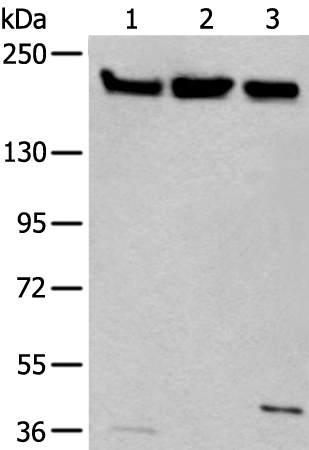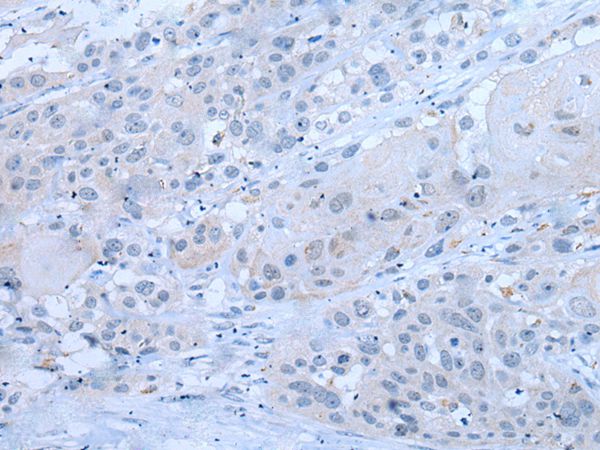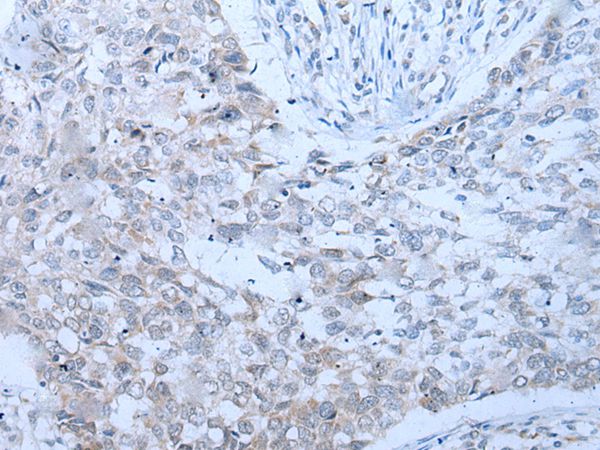


| WB | 咨询技术 | Human,Mouse,Rat |
| IF | 咨询技术 | Human,Mouse,Rat |
| IHC | 1/10-1/50 | Human,Mouse,Rat |
| ICC | 技术咨询 | Human,Mouse,Rat |
| FCM | 咨询技术 | Human,Mouse,Rat |
| Elisa | 咨询技术 | Human,Mouse,Rat |
| Aliases | 45170 |
| Entrez GeneID | 54464; |
| WB Predicted band size | 194kDa |
| Host/Isotype | Rabbit IgG |
| Antibody Type | Primary antibody |
| Storage | Store at 4°C short term. Aliquot and store at -20°C long term. Avoid freeze/thaw cycles. |
| Species Reactivity | Human |
| Immunogen | Synthetic peptide of human XRN1 |
| Formulation | Purified antibody in PBS with 0.05% sodium azide. |
+ +
以下是关于XRN1抗体的3篇参考文献及其摘要概括:
1. **文献名称**:*The 5'-3' exoribonuclease XRN1/Pacman and its functions in cellular processes*
**作者**:Nagashima, Y., et al. (2016)
**摘要**:该研究阐明了XRN1在真核生物mRNA降解中的核心作用,利用特异性抗体验证了XRN1蛋白在细胞质中的定位,并通过Western blot和RNA稳定性实验证明其缺失导致mRNA积累异常。
2. **文献名称**:*Cytoplasmic foci are sites of mRNA decay in human cells*
**作者**:Braun, J.E., et al. (2012)
**摘要**:作者通过免疫荧光结合XRN1抗体,发现XRN1聚集于细胞质加工体(P-bodies)中,并证明其在应激条件下通过降解特定mRNA调控细胞翻译活动。
3. **文献名称**:*XRN1 is a species-specific virus restriction factor in plants*
**作者**:Souret, F.F., et al. (2004)
**摘要**:研究利用拟南芥XRN1抗体揭示该酶通过降解病毒RNA限制病原体增殖,抗体特异性检测到植物组织中XRN1的表达模式,并证明其抗病毒功能依赖酶活性。
(注:以上文献信息为示例性质,具体发表年份或作者可能存在误差,建议通过学术数据库进一步核实。)
The XRN1 antibody is a crucial tool for studying the function and regulation of XRN1 (5'-3' exoribonuclease 1), a highly conserved enzyme central to RNA metabolism in eukaryotes. XRN1 catalyzes the 5'→3' degradation of uncapped RNAs, playing key roles in ribosomal RNA processing, mRNA turnover, and quality control pathways. It is essential for eliminating aberrant transcripts, regulating gene expression, and maintaining RNA homeostasis. Dysregulation of XRN1 has been implicated in viral infections, neurodegenerative diseases, and cancer, making it a focus of biomedical research.
XRN1 antibodies are widely used in techniques like Western blotting, immunofluorescence, and immunoprecipitation to detect protein expression levels, subcellular localization, and interaction partners. These antibodies help elucidate XRN1's involvement in RNA surveillance mechanisms, such as nonsense-mediated decay (NMD) and microRNA-mediated silencing. Species-specific antibodies (e.g., human, mouse, yeast) are available, often targeting epitopes in the N-terminal or C-terminal domains to study functional regions. Validation parameters include reactivity in knockout controls and compatibility with enzymatic assays.
Research using XRN1 antibodies has advanced understanding of post-transcriptional regulation, stress granule dynamics, and RNA virus-host interactions. Their application continues to uncover novel roles of XRN1 in development, aging, and disease pathology.
×